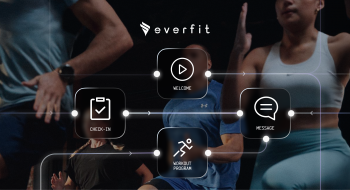In the fast-evolving world of fitness coaching and training, online client engagement is a vital aspect of ensuring long-term success. Building trust, promoting behavior change, and achieving substantial results with your online clients necessitate a strategic approach. Here are five essential steps to guide fitness coaches and trainers in this endeavor.
1. Unlock the Client’s Motivation
In any successful online training program, the first crucial step is delving into your client’s motivations. Why did they reach out for your guidance? Understanding these underlying reasons is key to customizing your approach effectively. To accomplish this, start by having an open, meaningful conversation with your client, asking probing questions to uncover their motivations. These could range from weight loss and improved health to increased energy or boosted self-confidence. Once you’ve unveiled their motivations, you can use this valuable insight as the cornerstone of your entire training program. For instance, if your client is motivated by a desire for increased self-confidence, your program may prioritize strength training, nutritional guidance, and positive reinforcement to help them build self-esteem.

Consider using Everfit’s Forms and Questionnaires feature to streamline this process. This tool enables you to share forms and collect information directly on the Client App. You can effortlessly integrate these forms into your Onboarding Flow, ensuring a seamless and consistent coaching experience for all your clients.
2. Establish Three-Month Behavioral Goals
Setting clear and achievable goals is crucial to keep clients engaged and committed. Three-month goals strike the right balance between providing short-term motivation and ensuring long-term success.
To put this into action, collaborate closely with your client to define specific, measurable, and realistic goals for the next three months. These goals should directly align with what motivates them. For instance, if your client’s motivation is weight loss, set a three-month goal to shed a specific number of pounds.

For example, a practical goal could be aiming to lose 10 pounds in the next three months by following a tailored exercise and diet plan. This approach not only sets a clear target but also makes the path to success more attainable and motivating for your client.
3. Decide on 12 Incremental Changes to Reach Those Goals
To ensure steady progress over three months, it’s best to focus on small, manageable changes rather than dramatic transformations. By setting up 12 incremental changes, you can help clients maintain their goals effectively. Work together with your client to pinpoint one achievable change every week that aligns with their objectives. For instance, if their goal is weight loss, start with a small change like reducing daily caloric intake by a specific percentage. A practical example could be cutting out sugary beverages in week one and committing to regular strength training in week two.
To make these goals even more achievable, consider setting up specific Custom Body Metrics or using Macros Tracking to establish measurable and trackable nutritional targets for your clients on Everfit. This not only simplifies the tracking process for both you and your client but also enhances the clarity and attainability of their goals.
4. Track Adherence
Regularly keeping an eye on your client’s progress is super important. It helps keep them accountable and motivated, making sure they’re on track to reach their goals. Here’s how you can do it:
- Data Tracking Apps: We offer a range of apps like Google Fit, Apple Health, Fitbit, Cronometer, MyFitnessPal, and Garmin that can sync with our platform. These apps help you track important stuff like weight, height, body mass index, body fat percentage, and the number of steps your clients take. This data is crucial for your coaching.
- Regular Check-Ins: You can use tasks to send automated check-ins to your clients. These little reminders help you stay in touch and keep them on course.
- Progress Photos: Encourage your clients to share progress photos with you. Seeing the changes over time can be really motivating for them. Plus, it’s a fantastic way for you to monitor their progress and make any needed adjustments. And don’t forget to offer praise and constructive feedback to keep them going strong.
5. Review and Reassess
Evaluating your client’s progress and goals is a key aspect of adjusting their training program to better suit their evolving needs and preferences. To put this into action, it’s a good practice to plan a thorough review session at the end of each three-month period. During this session, you’ll take stock of what they’ve accomplished, identify any challenges they’ve encountered, and determine what changes are necessary for the next phase. It’s also an ideal time to chat with your client about any shifts in their motivations or objectives.
For instance, let’s say your client successfully reached their initial weight loss goal. In the next phase, you might transition to a more advanced fitness training program focused on building muscle and enhancing strength. This approach ensures your training program remains dynamic and responsive to your client’s evolving needs, ultimately helping them achieve their fitness aspirations.

In conclusion, these five steps provide a structured framework for fitness coaches and trainers to build trust, promote behavior change, and improve results with online clients. By understanding motivations, setting clear goals, implementing gradual changes, tracking adherence, and regularly reviewing progress, you can create a dynamic and effective online training program that yields exceptional results and long-lasting client satisfaction.















